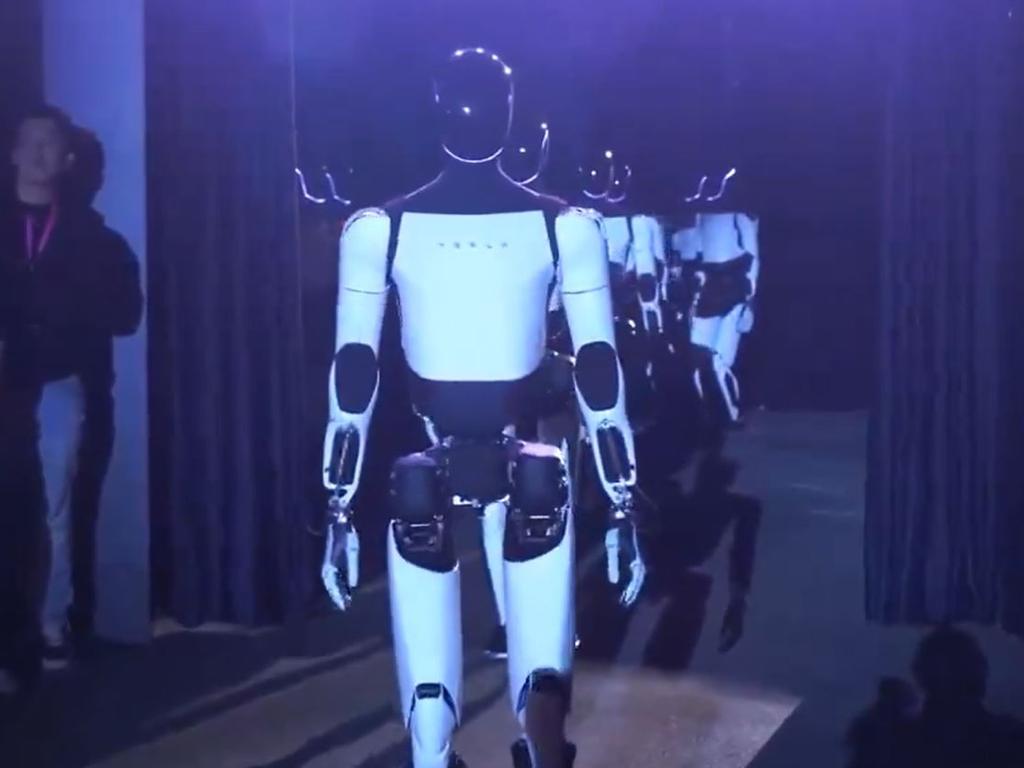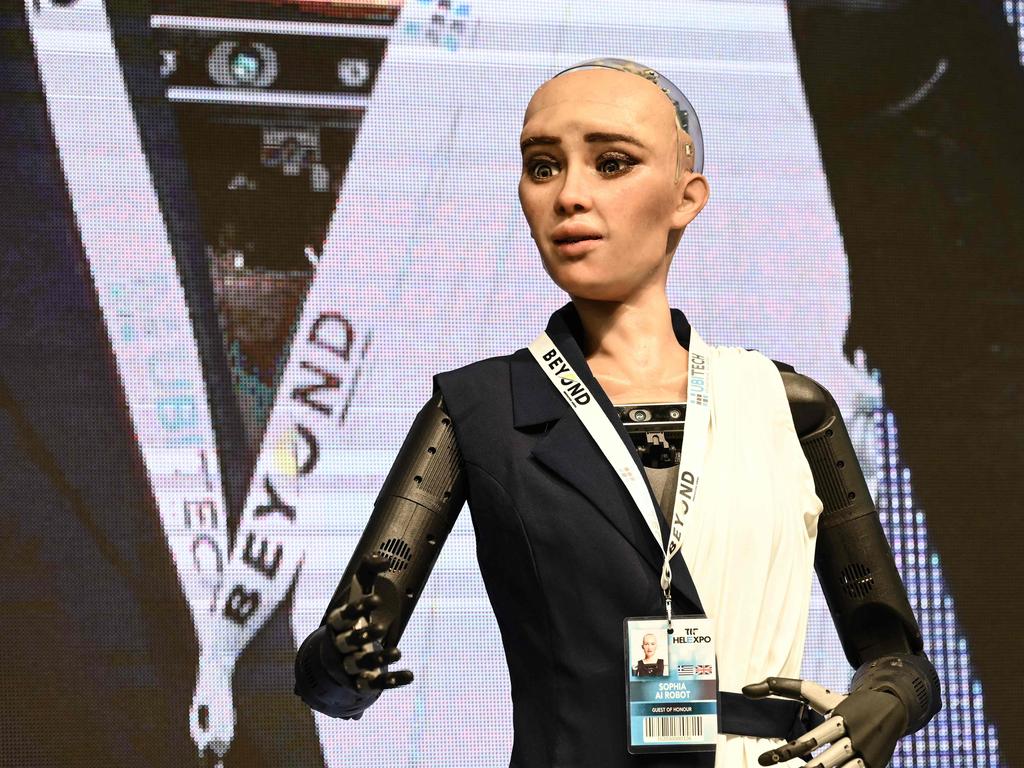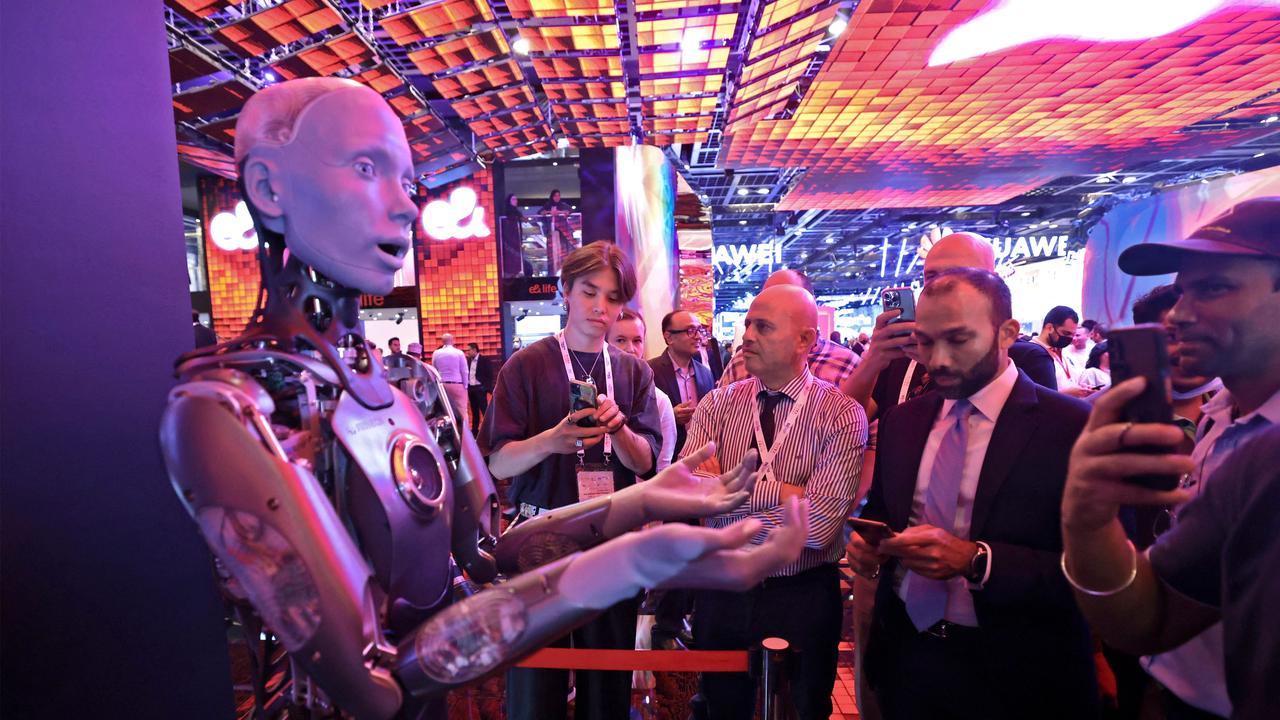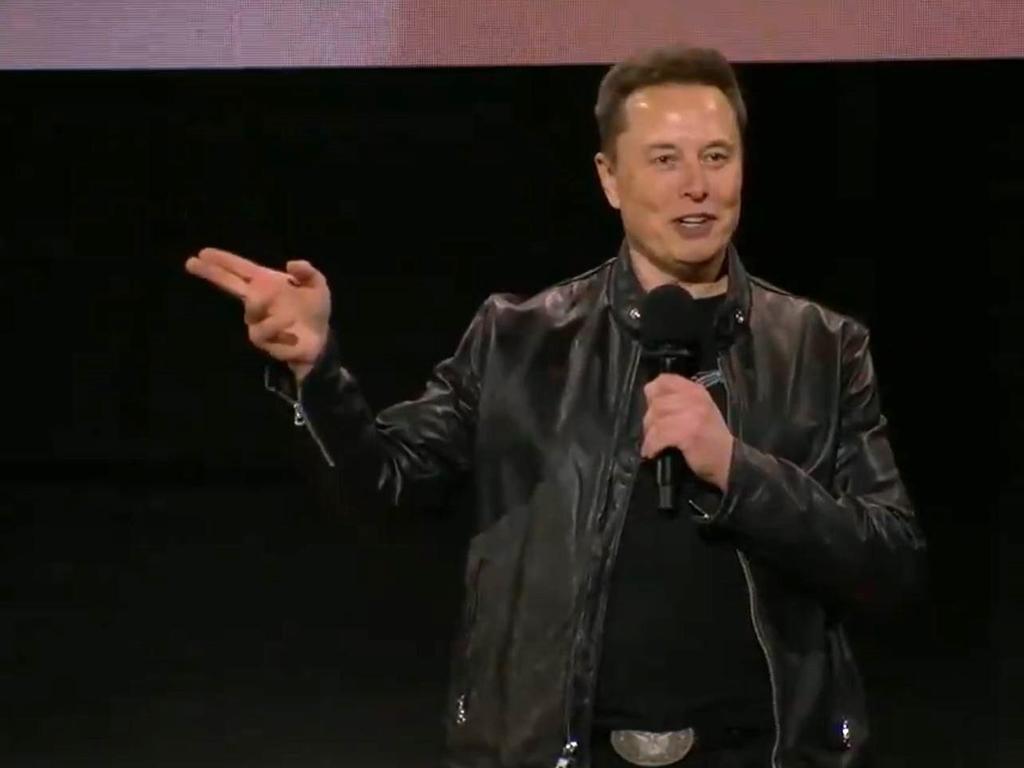Elon Musk’s plan to produce an affordable humanoid autonomous robot will spark a worker ‘revolution’
Elon Musk predicts there will soon be more autonomous humanoid robots in operation than people on earth – and chances are, they’ll be doing your job.
Lifelike and totally autonomous robots produced by billionaire Elon Musk will be so affordable and readily available that they will take on human jobs and spark unprecedented economic growth, a prominent tech innovator predicts.
Futurist Peter Diamandis, founder of XPRIZE, this week released the Humanoid Robotics Metatrend Report, forecasting the global robot sector is set for “explosive” investment and will soon be worth US$24 trillion (AU$37 trillion).
That boom will be driven in part by the ability of robots to replace workers in key sectors, with humanoid devices taking on the roles and responsibilities of people over the next several years.
Mr Diamandis believes aged care, manufacturing, and hazardous manual labour roles are some of the first that will be disrupted. There’s also huge potential for robots to take on work in logistics and agriculture, “revolutionising” those labour-reliant industries.
Operating costs would be cut “dramatically” as a result, seeing a “reshaping of global wealth”, Mr Diamandis said.
And one of the robots that will help kick-off the workforce evolution is Musk’s Optimus humanoid, which the billionaire believes will soon cost just $20,000 and be able to do all the tasks a person can.
A bit of smoke and mirrors
Tesla will begin “limited production” of its Optimus robots from next year, before entering full manufacturing capacity in 2026, Musk said recently.
Whether folding laundry or cleaning as a kind of domestic servant or assembling machinery on a factory production line, Musk believes the humanoids will have incredibly advanced capabilities.
And soon.
Tesla’s so-called ‘AI Teleoperation department’ is investing significantly in expansion and is currently on a global recruitment drive for engineers.
Financial news outlet Bending reported the hunt for talent is so aggressive that roles come with offered salaries ranging from US$120,000 (AU$185,000) to US$300,000 (AU$460,000).

Musk points to the acceleration as a sign that fully autonomous robots with advanced capabilities are just around the corner.
But as critics have pointed out, ‘teleoperation’ is an important word to note here, as it reveals that the level of autonomy currently possible isn’t as advanced as it seems.
Indeed, when Musk unveiled his Cybercab concept in October – self-driving taxis that he claimed would disrupt the industry – his Optimus robots were a central part of the launch party.
I asked. pic.twitter.com/FkgPrdRlyW
— Robert Scoble (@Scobleizer) October 11, 2024
Humanoids served guests drinks and even danced alongside them at the swanky soiree, but it later emerged each ‘robot’ was being remotely controlled by a human.
And back in 2021 when Musk first announced plans to build a robot, a man wearing a robot costume was brought out onto stage to breakdance.
Fairly lofty predictions
None-the-less, Mr Diamandis is certain about the potential for humanoid robots in his report.
He even interviewed Musk at last month’s Future Investment Initiative Institute conference in Riyadh, Saudi Arabia about the rapid evolution of technology.
In that one-on-one, Musk made a fairly bold prediction about AI and its ability to meet – and then overtake – the output of humans.
“I think it’ll be able to do anything that any human can do, possibly within the next year or two,” he declared.
“How much longer than that does it take to be able to do what all humans can do combined? I think not long. Probably only three years from that point. So, like 2029, 28, something like that.”

And on the future of humanoid robots, Musk sensationally predicted it won’t be too long until the number of active devices is higher than the number of humans.
“I think by 2040, probably there are more humanoid robots than there are people,” he said.
“I’m often optimistic on timing, although the press will report when I’m late, but not when I’m early – for example, our Shanghai factory, we thought it’d take about a year and a half, and we did it in 11 months. Our Giga Nevada factory, we thought two years, we did it in 18 months.
“But once you get out to 2040, that’s a long time from now, going on 25 years.”
It’s actually 16 years’ away. But in any case, Musk continued: “I think there’ll be at least 10 billion humanoid robots. The price point will be, I think, quite low, probably $20,000 to $25,000 for a robot that could do anything.”

On those ambitious predictions, it’s worth noting that Musk has been promising fully autonomous self-driving Teslas “by next year” for more than a decade now.
Reality check needed
Computational intelligence expert and Associate Professor at the Australian Catholic University Niusha Shafibady isn’t convinced.
The prospect of humanoid robots replacing workers at scale anytime soon is “not going to happen”, Dr Shafiabady said.
This is especially true for manual labour, such as in manufacturing settings, which tends to be done overseas in countries where workers are relatively cheap.
“Looking at the … socio-economic condition of the people living in those countries, and the financial motivations behind most of the investments, I would say it is much cheaper to employ a person rather than paying $20,000 to $30,000 for a humanoid robot,” Dr Shafiabady said.
“Labor is so cheap in parts of the world with high populations that it is much easier to employ a person rather than a robot that is likely to break down after 10 years.”

In wealthy Western nations, like Australia, the idea of humanoid robots replacing workers is even more far-fetched, Dr Shafiabady, who is also an adjunct associate professor at Charles Darwin University and a leading voice on AI evolution, believes.
“Look at somewhere like Australia. Try finding a regular cleaner for your house for a reasonable price. It is not easy and all of us know it,” she said.
“But let’s look at the scenario where Tesla would finance Elon Musk’s $20,000 robot for you to pay in instalments. Would you prefer to go under the obligation of an ongoing monthly cost for your humanoid cleaner, which would probably break down in 10 years, or deal with a human cleaner?
“I would go for the human option. And this is before the considerations related to privacy, of bringing some tech tool that can spy on your every move.”

For Musk’s forecasts to eventuate, “a gigantic level of investment” in technology and production would be needed, Dr Shafiabady said.
“And this is assuming that the humanoid robots have the ability to perform all tasks properly and accurately – which they don’t currently.”
But disruption is coming
Even if Musk’s robots need a fair bit of remote human help to complete their tasks, there’s no denying that rapid advancements in technology are reshaping society’s future.
AI in particular is predicted to disrupt everyday life as we know it, but particularly when it comes to work and workplaces.
There might not be a humanoid sitting at a desk alongside a human, but chances are software and process automation will replace jobs – sooner rather than later.

Last year, the World Economic Forum released a report warning about 26 million jobs will be wiped out by AI technology over the coming three years.
Dr Shafiabady recently modelled the jobs most likely to be disrupted in the top three industries in the sights of AI.
They are education and health services, professional and business services, and leisure and hospitality.
Australian Academy of Technological Sciences and Engineering chief executive Kylie Walker said there are plenty of potential benefits – but not without guardrails.
“Greater adoption of AI could see Australia’s economy increase by $200 billion annually, but it is critical that robust measures are rapidly implemented to safeguard these areas and position Australia at the forefront of AI development,” Ms Walker said.
“Investing further in local AI innovations will simultaneously create new AI industries and jobs here in Australia and reduce our reliance on internationally developed and maintained systems.”
More Coverage
Originally published as Elon Musk’s plan to produce an affordable humanoid autonomous robot will spark a worker ‘revolution’





